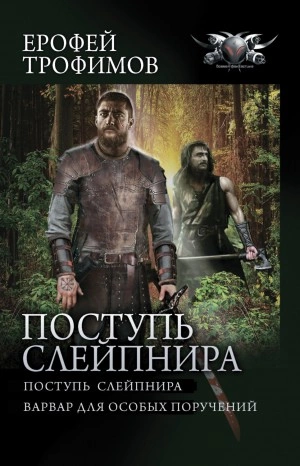Шрифт:
Интервал:
Закладка:
33
Bartlett, Frederic Charles, and F.C. Bartlett. Remembering: A Study in Experimental and Social Psychology. Cambridge: Cambridge University Press, 1932.
34
Chun, Marvin M., and Jeremy M. Wolfe. “Visual attention.” Blackwell Handbook of Perception, (2001): 272310.
35
Birnbaum, I. M., and E. S. Parker. Alcohol and Human Memory. Lawrence Erlbaum Associates, 1977.
36
Stroop, J. Ridley. “Studies of interference in serial verbal reactions.” Journal of Experimental Psychology 18, № 6 (1935): 643.
37
Culler, Arthur Jerome. Interference and Adaptability: An Experimental Study of Their Relation with Special Reference to Individual Differences. № 24. Science Press: 1912.
38
Blain, B., G. Hollard, and M. Pessiglione. “Neural mechanisms underlying the impact of daylong cognitive work on economic decisions.” Proceedings of the National Academy of Sciences 113, № 25 (2016): 6967–6972.
39
James, William. 1890. The Principles of Psychology. Harvard ed. vol. 2. New York: Holt, 1890, pg. 404.
40
Chun, Marvin M., and Jeremy M. Wolfe. “Visual attention.” Blackwell Handbook of Perception, (2001): 272310.
41
Monsell, S. (2003). “Task switching.” Trends in Cognitive Sciences 7, № 3 (March 2003): 134–140.
42
Nasar, J. L., and D. Troyer. “Pedestrian injuries due to mobile phone use in public places.” Accident Analysis & Prevention 57 (2013): 91–95.
43
Shapiro, Emily. 2021. “How hiker overcame mental hurdles to survive 8 days missing in wilderness.” ABC News, June 30, 2021, https://abcnews.go.com/US/hiker-overcame-mental-hurdles-survive-days-missing-wilderness/story?id=78533463.
44
Paxton, J. L., D. M. Barch, C. A. Racine, and T. S. Braver. “Cognitive control, goal maintenance, and prefrontal function in healthy aging.” Cerebral Cortex 18, № 5 (2008): 1010–1028.
45
Braver, T. S., and J. D. Cohen. “On the control of control: the role of dopamine in regulating prefrontal function and working memory.” Control of Cognitive Processes: Attention and Performance XVIII, (2000): 713–737.
46
Blain, B., G. Hollard, and M. Pessiglione. “Neural mechanisms underlying the impact of daylong cognitive work on economic decisions.” Proceedings of the National Academy of Sciences 113, № 25 (2016): 6967–6972.
47
Collopy, F. “Biases in retrospective self-reports of time use: an empirical study of computer users.” Management Science 42, № 5 (1996): 758–767.
48
Kane, Michael J., Leslie H. Brown, Jennifer C. McVay, Paul J. Silvia, Inez Myin-Germeys, and Thomas R. Kwapil. “For whom the mind wanders, and when: an experience-sampling study of working memory and executive control in daily life.” Psychological Science 18, № 7 (2007): 614–621.
49
Baird, Benjamin, Jonathan Smallwood, Michael D. Mrazek, Julia W. Y. Kam, Michael S. Franklin, and Jonathan W. Schooler. “Inspired by distraction: mind wandering facilitates creative incubation.” Psychological Science 23, № 10 (2012): 1117–1122.
50
Kane, Michael J., and Jennifer C. McVay. “What mind wandering reveals about executive-control abilities and failures.” Current Directions in Psychological Science 21, № 5 (2012): 348–354.
51
Levy, David M., Jacob O. Wobbrock, Alfred W. Kaszniak, and Marilyn Ostergren. “The effects of mindfulness meditation training on multitasking in a high-stress information environment.” Proceedings of Graphics Interface, (2012): 45–52.
52
Herrnstein, R. J. On the law of effect 1. Journal of the Experimental Analysis of Behavior 13, № 2 (1970): 243–266.
53
Johnson, Samuel. The Works of Samuel Johnson. London: Jones & Co., 1825.
54
Baudrillard, J. Simulacra and Simulation. Ann Arbor, MI: University of Michigan Press, 1994.
55
“The state of online gaming.” Limelight, 2020. Accessed July 2022, https://de.limelight.com/resources/white-paper/state-of-online-gaming-2020/.
56
Kahneman, D. Attention and Effort. Englewood Cliffs, NJ: Prentice Hall, 1973.
57
James, William. The Principles of Psychology. Vol. 1, New York: Holt, 1890.
58
Charney, Noah. “Maya Angelou: how I write.” The Daily Beast, April 10, 2013, https://www.thedailybeast.com/maya-angelou-how-i-write.
59
Locke, John. An Essay Concerning Human Understanding. Philadelphia: Kay & Troutman, 1847.
60
Пер. с англ. А. Н. Савина.
61
James, William. The Principles of Psychology. Vol. 1, New York: Holt, 1890.
62
Tellegen, Auke, and Gilbert Atkinson. “Openness to absorbing and self-altering experiences (‘absorption’), a trait related to hypnotic susceptibility.” Journal of Abnormal Psychology 83, № 3 (1974): 268.
63
Lifshitz, Michael, Michiel van Elk, and Tanya M. Luhrmann. “Absorption and spiritual experience: a review of evidence and potential mechanisms.” Consciousness and Cognition 73 (2019): 102760.
64
Angiulo, Michael J., and John F. Kihlstrom. “Dissociative experiences in a college population.” Unpublished manuscript, University of Arizona, 1993.
65
Webster, Jane, and Hayes Ho. “Audience engagement in multimedia presentations.” ACM SIGMIS Database: The DATABASE for Advances in Information Systems 28, № 2 (1997): 63–77.
66
Csikszentmihalyi, Mihaly. Flow: The Psychology of Optimal Experience. New York: Harper & Row, 1990.
67
Friedman, William. About Time: Inventing the Fourth Dimension. The MIT Press, 1990.
68
Hektner, Joel M., Jennifer A. Schmidt, and Mihaly Csikszentmihalyi. Experience Sampling Method: Measuring the Quality of Everyday Life. Thousand Oaks, CA: Sage, 2007.
69
Plimpton, George. “Maya Angelou, the art of fiction.” The Paris Review 119, № 116 (1990),
- Логистика хранения товаров: Практическое пособие - Владислав Волгин - Экономика
- Манипулирование словом в средствах массовой информации - Анна Данилова - Психология
- Экономика для "чайников" - Шон Флинн - Экономика
- Общая теория капитала. Самовоспроизводство людей посредством возрастающих смыслов. Часть вторая - А. Куприн - Периодические издания / Экономика
- Нет плохому поведению - Мишель Борба - Психология
- Аспектика - Живорад Славинский - Психология
- Аспектика. Тезисы - Живорад Славинский - Психология
- Психология рекламы - Александр Лебедев-Любимов - Психология
- Самоосвобождающаяся игра - Вадим Демчог - Психология
- Самоосвобождающаяся игра - Вадим Демчог - Психология







